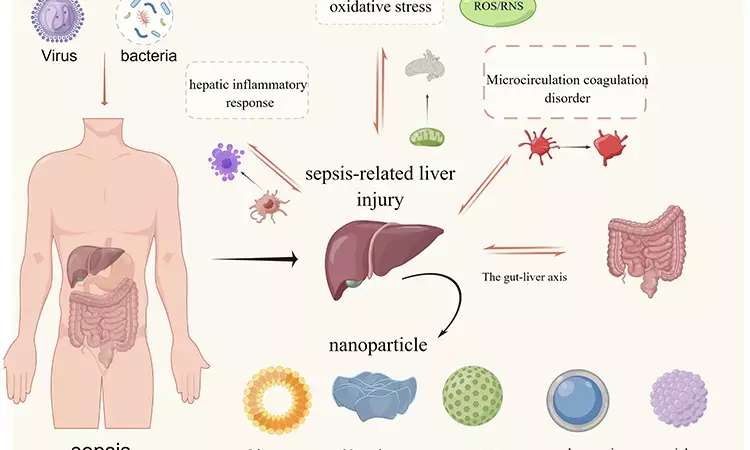- Home
- Medical news & Guidelines
- Anesthesiology
- Cardiology and CTVS
- Critical Care
- Dentistry
- Dermatology
- Diabetes and Endocrinology
- ENT
- Gastroenterology
- Medicine
- Nephrology
- Neurology
- Obstretics-Gynaecology
- Oncology
- Ophthalmology
- Orthopaedics
- Pediatrics-Neonatology
- Psychiatry
- Pulmonology
- Radiology
- Surgery
- Urology
- Laboratory Medicine
- Diet
- Nursing
- Paramedical
- Physiotherapy
- Health news
- Fact Check
- Bone Health Fact Check
- Brain Health Fact Check
- Cancer Related Fact Check
- Child Care Fact Check
- Dental and oral health fact check
- Diabetes and metabolic health fact check
- Diet and Nutrition Fact Check
- Eye and ENT Care Fact Check
- Fitness fact check
- Gut health fact check
- Heart health fact check
- Kidney health fact check
- Medical education fact check
- Men's health fact check
- Respiratory fact check
- Skin and hair care fact check
- Vaccine and Immunization fact check
- Women's health fact check
- AYUSH
- State News
- Andaman and Nicobar Islands
- Andhra Pradesh
- Arunachal Pradesh
- Assam
- Bihar
- Chandigarh
- Chattisgarh
- Dadra and Nagar Haveli
- Daman and Diu
- Delhi
- Goa
- Gujarat
- Haryana
- Himachal Pradesh
- Jammu & Kashmir
- Jharkhand
- Karnataka
- Kerala
- Ladakh
- Lakshadweep
- Madhya Pradesh
- Maharashtra
- Manipur
- Meghalaya
- Mizoram
- Nagaland
- Odisha
- Puducherry
- Punjab
- Rajasthan
- Sikkim
- Tamil Nadu
- Telangana
- Tripura
- Uttar Pradesh
- Uttrakhand
- West Bengal
- Medical Education
- Industry
Lactate-to-albumin ratio may independently predict adverse outcomes in sepsis-associated liver injury patients

Lactate-to-albumin ratio independent risk factor for adverse outcomes in sepsis-associated liver injury patients suggests a new study published in the BMC Infectious Diseases.
The mortality rate of sepsis-associated liver injury (SALI) is relatively high, but there is currently no authoritative prognostic criterion for the outcome of sepsis-associated liver injury. Meanwhile, the lactate-to-albumin ratio has been confirmed to be associated with mortality rates in conditions such as sepsis, heart failure, and respiratory failure. However, research reporting is scarce on the association between lactate-to-albumin ratio and sepsis-associated liver injury. This study aimed to elucidate the association between the lactate-to-albumin ratio and the 28-day mortality rate of sepsis-associated liver injury. In this retrospective cohort study, data were obtained from the Medical Information Mart for Intensive Care IV (v2.2). Adult patients with sepsis-associated liver injury were admitted to the intensive care unit in this study. The lactate-to-albumin ratio level at admission was included, and the primary aim was to assess the relationship between the lactate-to-albumin ratio and 28-day all-cause mortality. Results: A total of 341 patients with sepsis-associated liver injury were screened. They were divided into a survival group (241) and a non-survival group (100), and the 28-day mortality rate was 29.3%. Multivariable Cox regression analysis revealed that for every 1-unit increase in the lactate-to-albumin ratio, the 28-day mortality risk for sepsis-associated liver injury patients increased by 21%, with an HR of 1.21 This study indicates that in patients with SALI, a higher LAR is associated with an increased risk of all-cause mortality within 28 days of admission. This suggests that LAR may serve as an independent risk factor for adverse outcomes in SALI patients.
Reference:
Yi X, Jin D, Huang S, Xie Z, Zheng M, Zhou F, Jin Y. Association between lactate-to-albumin ratio and 28-days all-cause mortality in patients with sepsis-associated liver injury: a retrospective cohort study. BMC Infect Dis. 2024 Jan 9;24(1):65. doi: 10.1186/s12879-024-08978-x. PMID: 38195421; PMCID: PMC10775525.
Keywords:
Lactate-to-albumin ratio, independent risk factor liver, adverse outcomes liver, sepsis-associated liver injury, Yi X, Jin D, Huang S, Xie Z, Zheng M, Zhou F, Jin Y, Lactate-to-albumin ratio, Liver injury, All-cause mortality, 28-days, Sepsis, MIMIC IV, BMC Infectious Diseases
Dr. Shravani Dali has completed her BDS from Pravara institute of medical sciences, loni. Following which she extensively worked in the healthcare sector for 2+ years. She has been actively involved in writing blogs in field of health and wellness. Currently she is pursuing her Masters of public health-health administration from Tata institute of social sciences. She can be contacted at editorial@medicaldialogues.in.
Dr Kamal Kant Kohli-MBBS, DTCD- a chest specialist with more than 30 years of practice and a flair for writing clinical articles, Dr Kamal Kant Kohli joined Medical Dialogues as a Chief Editor of Medical News. Besides writing articles, as an editor, he proofreads and verifies all the medical content published on Medical Dialogues including those coming from journals, studies,medical conferences,guidelines etc. Email: drkohli@medicaldialogues.in. Contact no. 011-43720751


